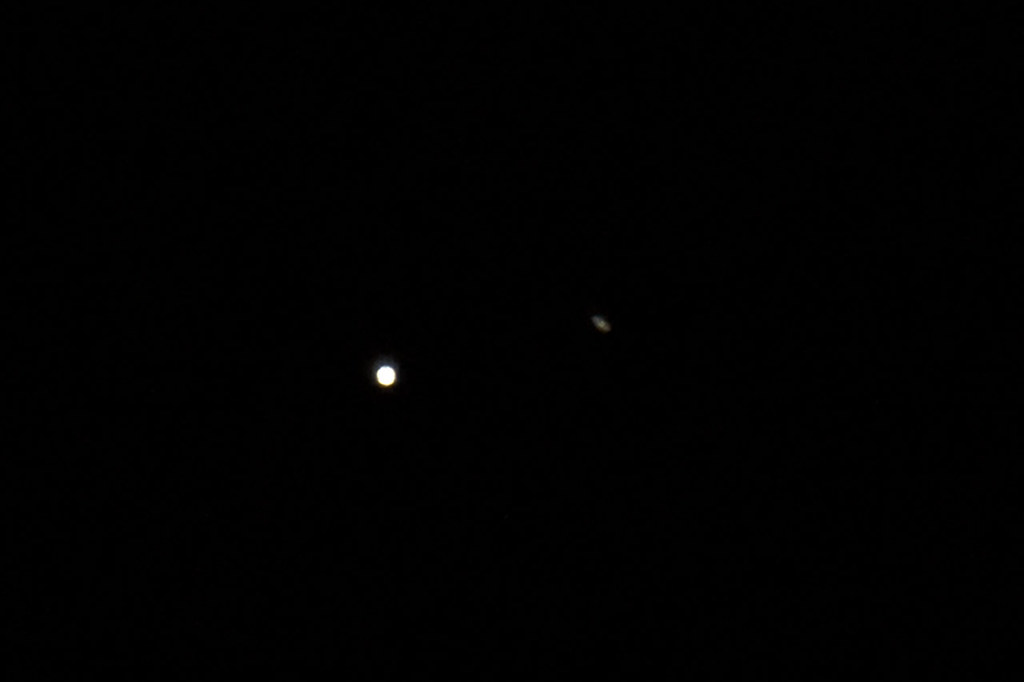wfooshee
O, Woe is me!!
Unless you've stayed in a cave or under a rock, you all know that Jupiter and Saturn joined each other in the sky for their closest appearance together in centuries. My photography group was inundated with shots by everyone and his dog, showing the planets together in one frame of the camera. Most used telescopes, which is a distinct advantage to getting an image. i.e. Cheating.
I don't have a telescope or access to one, and on this night I didn't even have a tripod, as I was traveling out-of-state for work. I bumped up the ISO, set the aperture as wide as it would go, and threw out some handheld attempts at speeds from 1/250th to 1/500th. I also tried to set the camera on the roof of the car, using my wadded up jacket as a "platform" and the self-timer to trigger the shutter, but longer exposures, while they gathered more light (and even made the moons of Jupiter clearly visible, all had horrible motion streaking and were not exactly keepers.
I could have saved myself some time and just gone on to dinner, as the one keeper I had was the first shot I took, 1/320th and ISO400, and brought up a bit in Photoshop, with some heavy noise filtering. Jupiter is just a white blob, no moons are visible, but I got Saturn's rings!!!! On a plain old digital SLR with a 300mm lens! I never expected to actually resolve the rings, I was just hoping for something I could learn from. Maybe.
This doesn't compare to those shots you've seen from backyard telescopes, but I did it with a D7200 and a 70-300mm zoom lens, handheld!!!

I don't have a telescope or access to one, and on this night I didn't even have a tripod, as I was traveling out-of-state for work. I bumped up the ISO, set the aperture as wide as it would go, and threw out some handheld attempts at speeds from 1/250th to 1/500th. I also tried to set the camera on the roof of the car, using my wadded up jacket as a "platform" and the self-timer to trigger the shutter, but longer exposures, while they gathered more light (and even made the moons of Jupiter clearly visible, all had horrible motion streaking and were not exactly keepers.
I could have saved myself some time and just gone on to dinner, as the one keeper I had was the first shot I took, 1/320th and ISO400, and brought up a bit in Photoshop, with some heavy noise filtering. Jupiter is just a white blob, no moons are visible, but I got Saturn's rings!!!! On a plain old digital SLR with a 300mm lens! I never expected to actually resolve the rings, I was just hoping for something I could learn from. Maybe.
This doesn't compare to those shots you've seen from backyard telescopes, but I did it with a D7200 and a 70-300mm zoom lens, handheld!!!































































